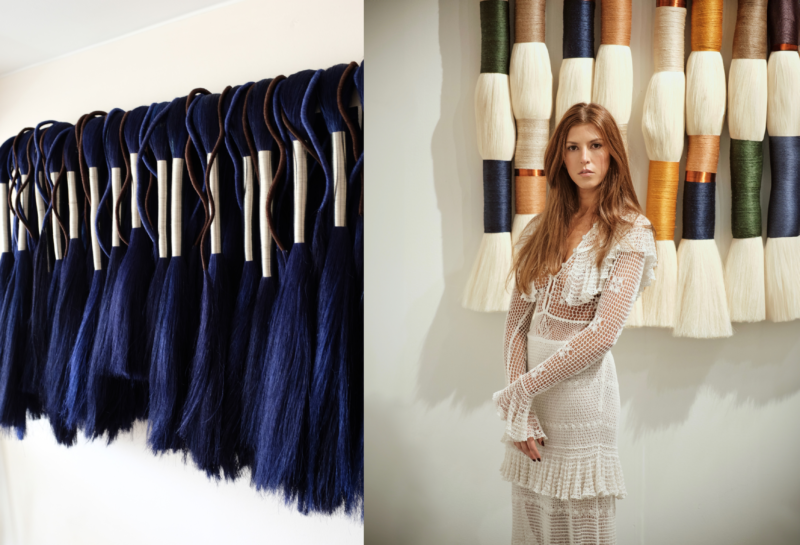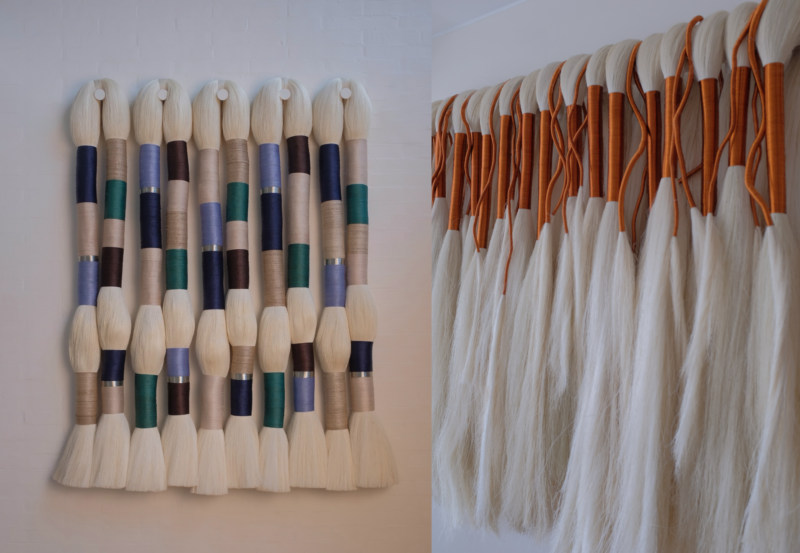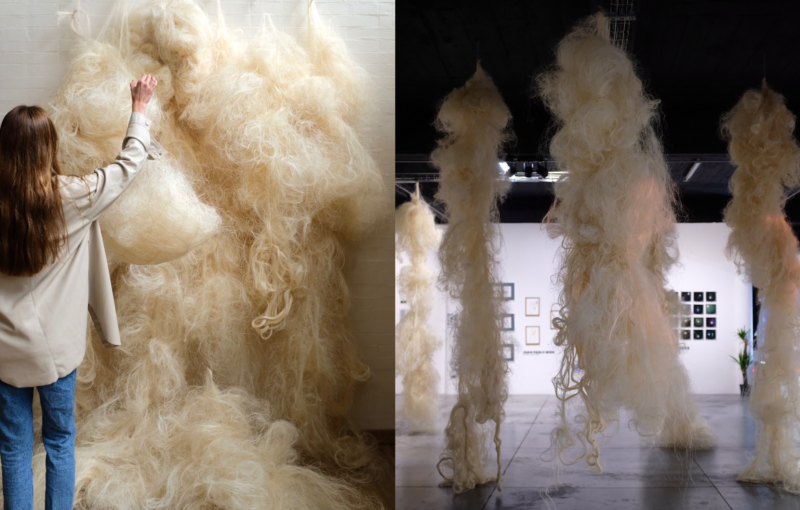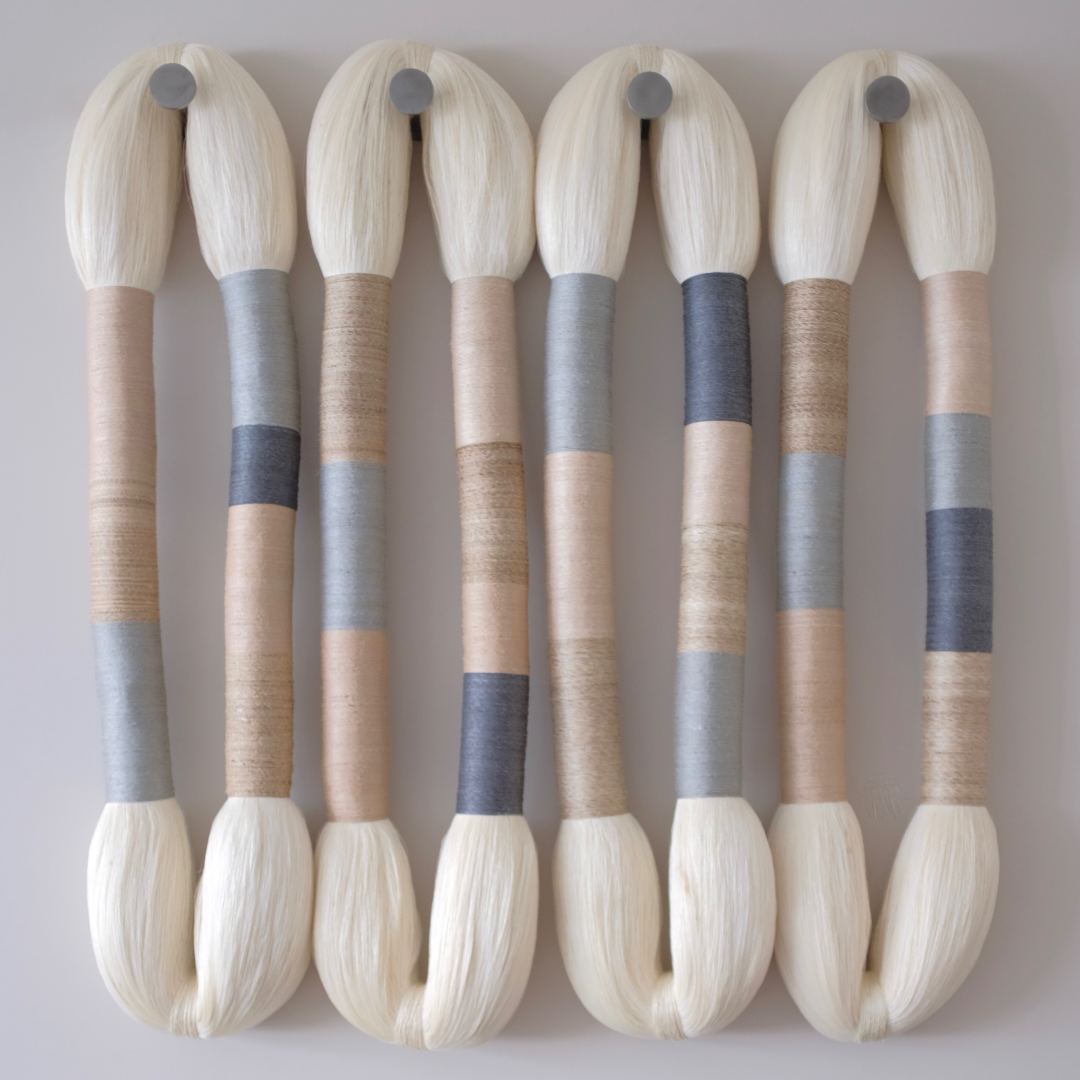Alejandra Aristizabal is an internationally recognized Colombian artist whose work draws inspiration from traditional culture. She creates impressive pieces using fique, a plant cultivated by local farmers. In an interview with Fine Art Shippers, she discussed her complex creative process, collaboration with communities, and the social responsibility of art.
Artist Talk: Alejandra Aristizabal on Making a Difference Through Art
How did you get started in art? Was it something that began in your childhood, or was there a specific moment that drew you into the art world?
Alejandra Aristizabal: I grew up surrounded by creative people. My grandmother was the first to introduce me to painting, and from a young age, I was totally captivated by it. I’d paint flowers over and over throughout my childhood. Later, when I went to college in Miami to study visual arts, I got to experiment with all kinds of media—photography, sculpture, ceramics, and more.
Working on my thesis, I felt this urge to reconnect with my roots. I began to study different materials and traditional techniques. That search brought me back to Colombia, to a small town called Aranzazu, where they grow a plant called fique. I fell in love with the fiber they get from its leaves. I started making sculptures and experimenting with the fiber’s textures and colors. My style has changed over time, but fique is still at the heart of what I do. I regularly visit small towns in Colombia, like Aranzazu and Curití, where I work with farmers and learn from local artisans. It helps me stay grounded in the origins of my art and connected to my heritage.  Your art is centered around social issues. How do you think it helps bridge gaps between different people and social groups?
Your art is centered around social issues. How do you think it helps bridge gaps between different people and social groups?
In the beginning, I studied visual arts, but over time, I worked in a variety of creative fields. Eventually, I reached a point where I knew I wanted to dedicate my life to this particular work. I wanted to connect with nature and with the people working on the land. But most importantly, I hoped to make a difference in their communities.
When I started visiting small Colombian towns, I noticed that what I did was having a real impact on local people’s lives. It felt like a full-circle moment, where nature provided the plant, the farmers cultivated and processed the fibers, and I, as the artist, transformed them into pieces to share with the world.
Economically, fique doesn’t bring the same financial benefits as other crops, which makes the farmers’ dedication even more inspiring. In our partnership, we both contribute. As these pieces are sold internationally, I make sure to give back to the farmers to honor their work. I also hope my art helps create a positive image of Colombia around the world.
Could you share some stories about how your collaboration with the farmers has made a difference in their lives?
These families have many children, and the money they earn allows them to educate their kids. The farmers live in beautiful homes surrounded by nature in the mountains, and they genuinely love what they do. However, the younger generation wants to explore city life and opportunities beyond the farm. This support has helped them pursue those dreams through education.  Let’s talk about your creative process. What does it involve? How long does it usually take to complete an artwork? The first stage is processing the fiber, which is quite a lengthy process. The farmers extract it from the leaves, wash it, and then hang it out to dry. This step is very important because, initially, the fiber is green, but it turns white when exposed to the sun. After drying, the fiber needs to be brushed until it’s clean and smooth, which also takes time. Only then can I begin working. I create both large-scale and smaller pieces, but even the smaller ones can take a while, depending on the amount of fiber available. Sometimes, there are delays because of weather—too much sun or rain can impact the supply. Overall, a piece can take about a month, sometimes even longer.
Let’s talk about your creative process. What does it involve? How long does it usually take to complete an artwork? The first stage is processing the fiber, which is quite a lengthy process. The farmers extract it from the leaves, wash it, and then hang it out to dry. This step is very important because, initially, the fiber is green, but it turns white when exposed to the sun. After drying, the fiber needs to be brushed until it’s clean and smooth, which also takes time. Only then can I begin working. I create both large-scale and smaller pieces, but even the smaller ones can take a while, depending on the amount of fiber available. Sometimes, there are delays because of weather—too much sun or rain can impact the supply. Overall, a piece can take about a month, sometimes even longer.
How do you develop a creative idea? Do you make sketches?
I do a lot of sketching. Some days, I just focus on organizing ideas, other days, on the business side of things. I like to set aside a good chunk of time each month just for designing new patterns, colors, and sizes—whatever I'm excited about at the moment. It also depends on the shows I have coming up, as each location has its own vibe. Showing in London feels very different from Hong Kong, and I find inspiration in each culture.
You use different vivid colors in your work—is there any symbolism behind them?
There isn’t a specific symbolism in the colors I use, but I do have a color palette I often work with. It really depends on what I feel inspired by at the moment. It’s similar to painting—some days I feel drawn to blue, other days to red, yellow, green, etc. My pieces are like a canvas where I start layering colors, letting them interact and complement each other visually. Most of the colors I use—beige, orange, copper tones, some greens, and yellows, are entirely natural. But some colors, for example, dark blues and certain greens, may require a bit of chemical dye.  Can you talk a little about some of your recent and upcoming projects? Recently, I had an exhibition at Christie’s, curated by Georgia Powell and Liza Shapiro, the founders of the Cura Art consultancy. It was a beautiful experience. Coming from a small town in Colombia, it feels incredibly meaningful to have my work showcased in London and to hear respected voices in the art world discussing it. I’ve also been working with the Miami gallery, Wolf and Nomad, for the past two years, and I collaborate with Cura Art on various projects. Next year, I’ll have exhibitions in cities worldwide: Miami, New York, London, Hong Kong, and Basel. I'm very much looking forward to that.
Can you talk a little about some of your recent and upcoming projects? Recently, I had an exhibition at Christie’s, curated by Georgia Powell and Liza Shapiro, the founders of the Cura Art consultancy. It was a beautiful experience. Coming from a small town in Colombia, it feels incredibly meaningful to have my work showcased in London and to hear respected voices in the art world discussing it. I’ve also been working with the Miami gallery, Wolf and Nomad, for the past two years, and I collaborate with Cura Art on various projects. Next year, I’ll have exhibitions in cities worldwide: Miami, New York, London, Hong Kong, and Basel. I'm very much looking forward to that.
Interview by Inna Logunova Photo courtesy of Alejandra Aristizabal
